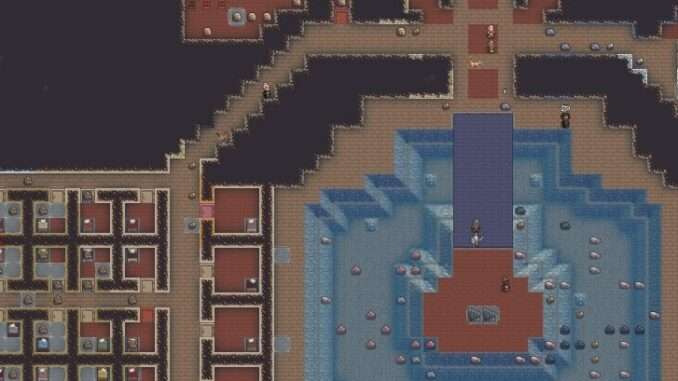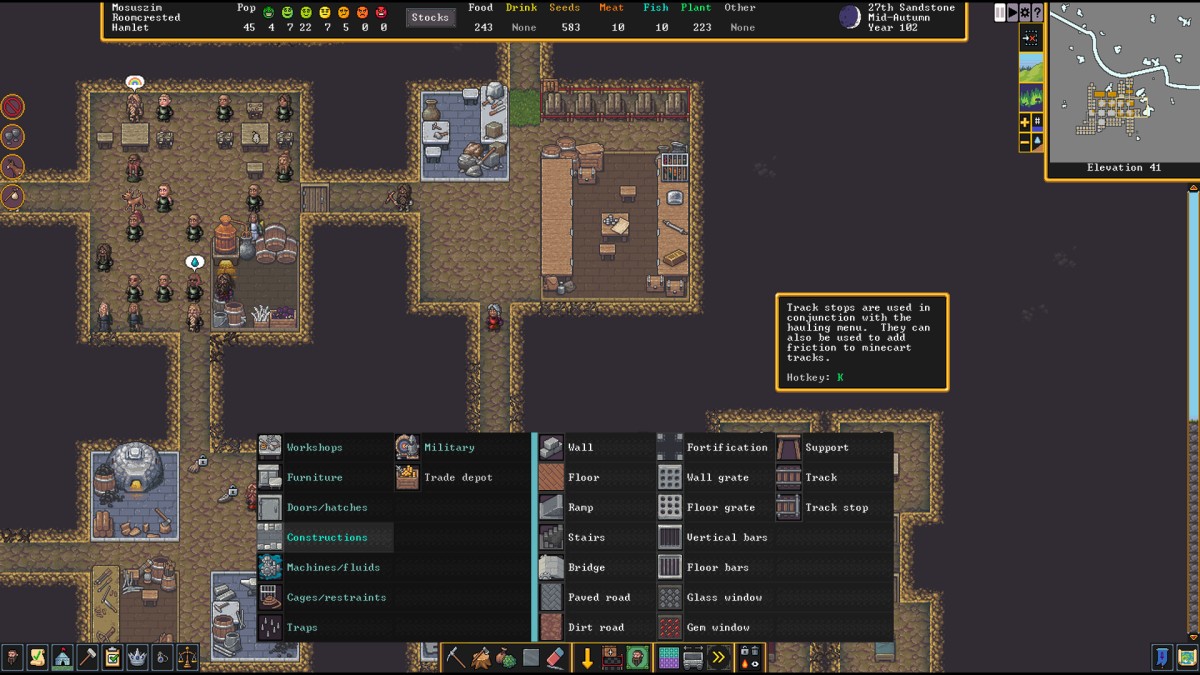

However, stones that are forbidden, already associated with another task, or placed upon the construction site after the designation will cause the construction to be suspended. Loose stones located in a designated stockpile can prevent the use of the occupied tile until the stone is removed, effectively shrinking your stockpile.

Loose stones can also "hide" other content on a tile (since the game displays only a single item per tile). This can make finding specific items more difficult, and occasionally result in overlooked rotten items producing miasma that disgusts dwarves. Additionally, some players find these stones unsightly, ruining the aesthetic appeal of their fortresses. However, some view it as an exploit, and it may not be allowed in future versions.
Make a zone of 1×1 or 1×2 tiles, preferably either near the stones you want to get rid of or your stone-needy workshops, and mark it as a garbage dump. Press d, and the stone will be marked for dumping. You can also use d, b, d to designate mass items for dumping.Īlternatively, use the stocks menu (faster for mass dumping, but requires some bookkeeper labor first). You could also use a dumping macro to designate large amounts of stones at once. Every dumped stone will be marked as " forbidden." Use the stocks menu to globally un-forbid types of stone, or use the designation 'Reclaim Items' ( d- b- c) to reclaim the entire pile.A dwarf with refuse-hauling enabled will take the stone to the garbage dump.Be careful when you mark areas containing cave spider silk for dumping, as dwarves will actually come along and destroy the webs! However, macros do not discriminate between stones and other items, so it is best to use them right after you dig out a new area. No matter how many stones you mark for dumping, they will all be placed on the same tiny garbage tile.Macros may come in handy when employing this method.) (If you want to only use specific stones, you must press k, find the pile, and press f on every stone you want on the list, using +/ - to navigate through the list. You have to claim stones for them to be used after they are dumped.Having multiple garbage dumps will cause the haulers to occasionally choose far away dump zones, spreading the stones out and making removal take longer.It can take a long time to clear all the stone from an area, so you may want to be strategic about which stones you dump and hide the rest.Requires user oversight when using several temporary dumps.Dwarves will crawl over one another to get to a 1×1 dump.Anything else you dump will end up on those piles too.Placing your quantum stockpile near your mason or craftsdwarf workshop provides a convenient source of raw materials and greatly speeds up production.Dumping stone, instead of just hiding, doesn't interfere with stockpiles (unless the dump is on a stockpile).You can use d, b, h to hide all the stone in a dump quickly.Conceivably, every single stone and ore in the fortress can fit on 1 tile. Dumping lots of stones from several different areas can cause Dwarves to run long distances since the AI doesn't look for the closest stone.d, b, c will allow you to claim an entire pile of stones quickly. 
So it's best to dump stone from a single area at a time. Stone can be selectively hauled by using two linked stockpiles. The first stockpile is placed over the area to be cleared, and the second is placed over the stones' final destination. Both of these stockpiles are set to take from links only, and the stockpiles are linked so that the first stockpile feeds into the second. More than two stockpiles may be linked in this fashion. Unlike quantum stockpiling, is not generally considered an exploit.Uses "Stone hauling" labor (instead of "Refuse hauling" for a quantum stockpile).Multiple linked stockpile areas can operate simultaneously and independently without cross-contamination.Linking stockpiles prevents dwarves from hauling stones from all over the fortress.No reclamation required-stockpiled stones are readily available to your masons and crafters.







 0 kommentar(er)
0 kommentar(er)
